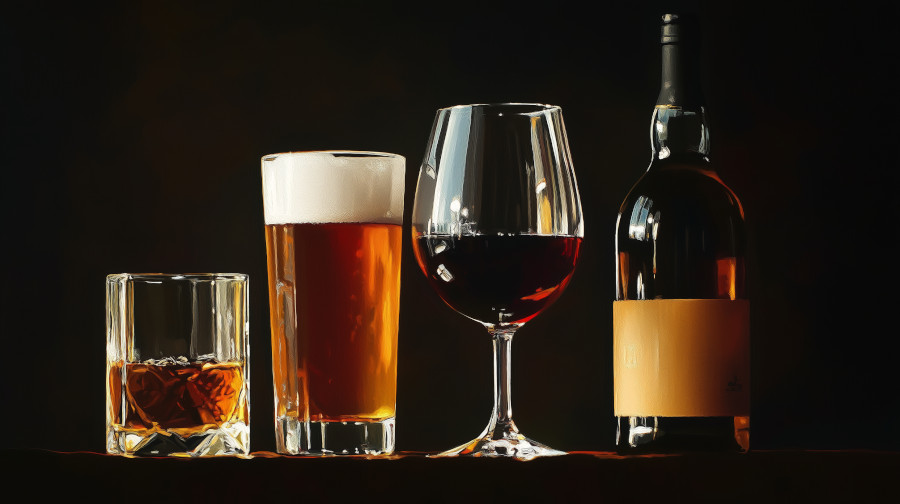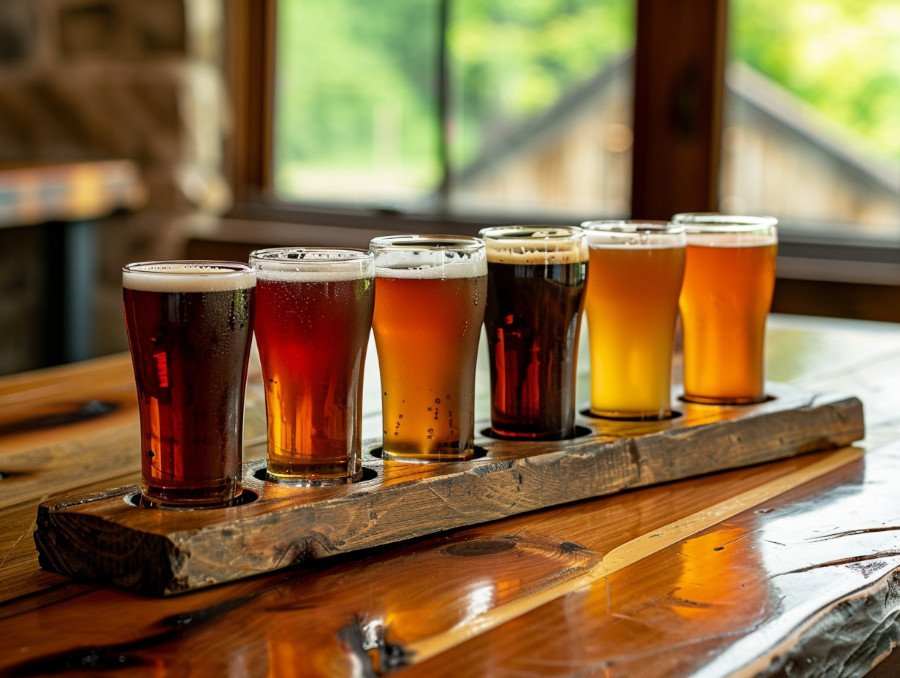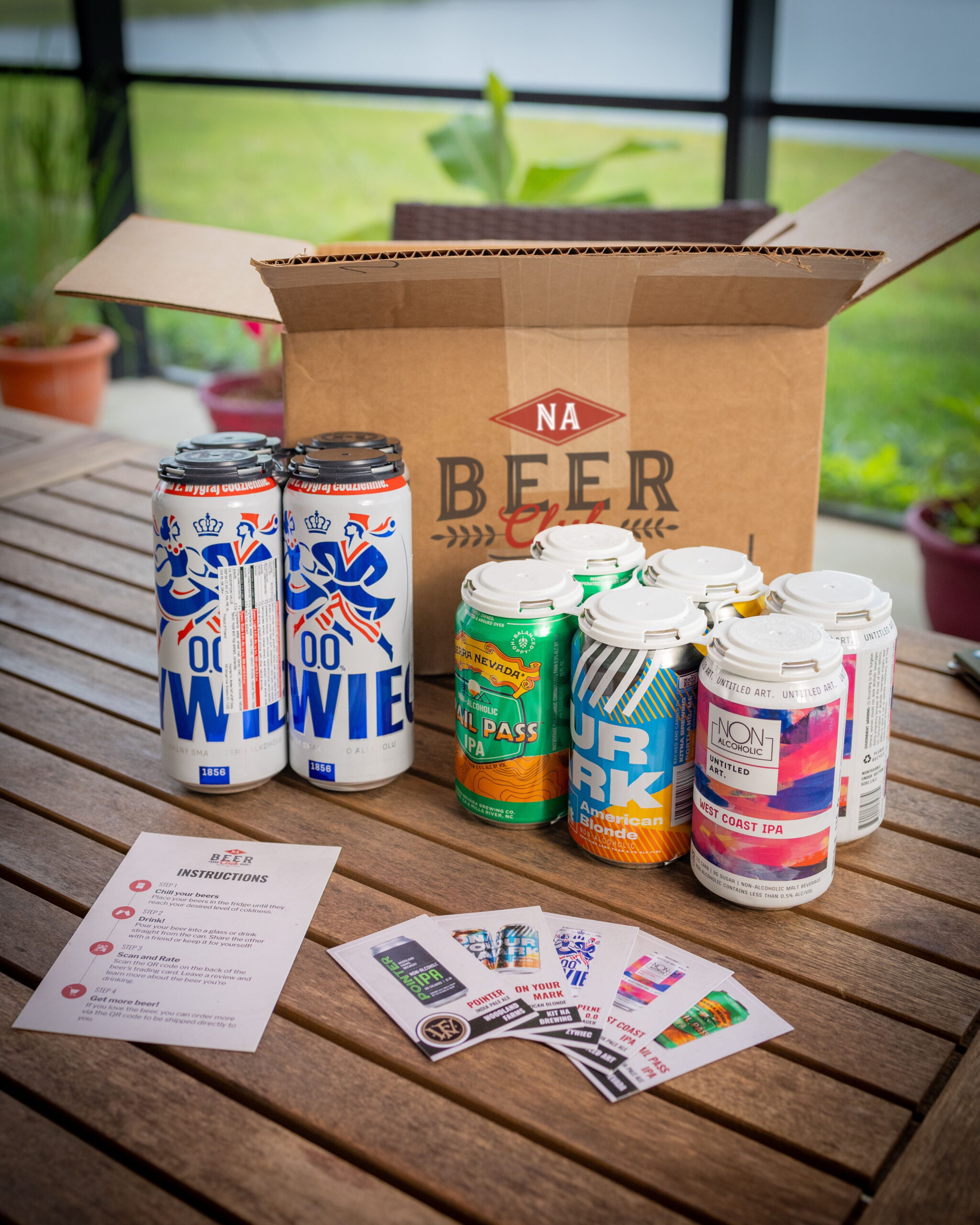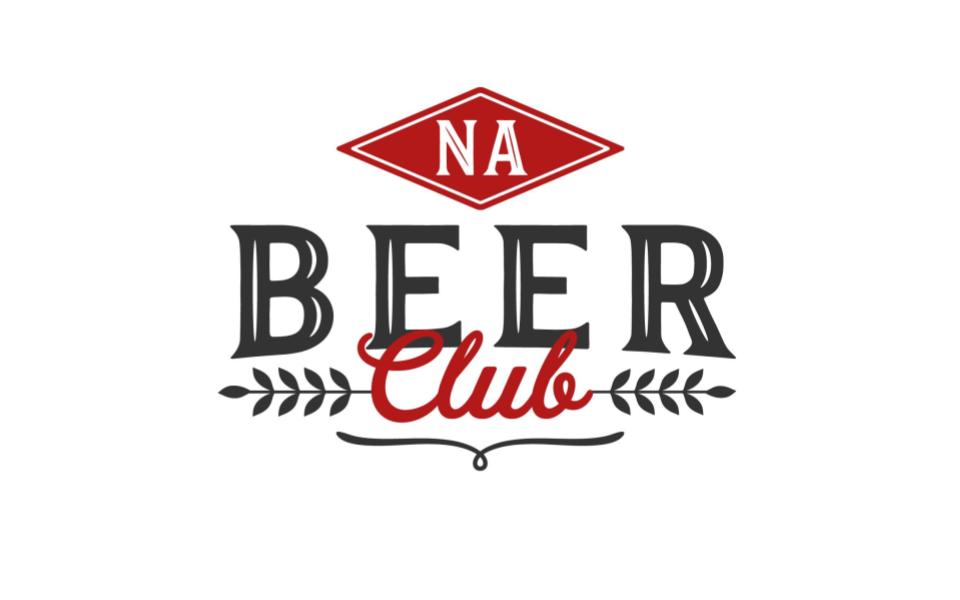In recent years, a growing number of people have started to rethink their relationship with alcohol.
While some choose to go completely sober, many are finding that they don’t want or need to cut out alcohol entirely to experience some of the benefits of sobriety.
This is where the concept of “Damp Drinking” comes into play.
Damp Drinking is a relatively new term that refers to a mindful approach to alcohol consumption. It involves significantly reducing your alcohol intake without giving it up completely.
Unlike “Dry January“, “Sober October“, or a fully sober lifestyle, which requires abstinence from alcohol, damp drinking allows for occasional drinking in moderation.
This approach is gaining popularity among those who want to enjoy a drink now and then without the pressure or rigidity of total sobriety.
The appeal of damp drinking lies in its flexibility and balance. For many, the idea of never drinking again can feel daunting or even undesirable.
Alcohol often plays a significant role in social interactions, celebrations, and cultural rituals. Therefore, cutting it out entirely might not be a feasible or attractive option for everyone.
Damp drinking offers an alternative path, providing the freedom to enjoy alcohol in moderation while still reaping some of the benefits associated with cutting back, such as improved health, better sleep, and increased mental clarity.
In this article, we will dive deeper into what damp drinking is, why it resonates with so many people, and how you can practice it in your own life. We’ll explore the benefits, provide practical tips, and compare damp drinking to other drinking trends.
Whether you’re considering reducing your alcohol intake or are just curious about this new trend, read on to discover how damp drinking might offer a balanced approach that fits your lifestyle.

Reasons Why People Don’t Want to Go Completely Sober
While the idea of going completely sober has its merits, it’s not a path that appeals to everyone. Many individuals find the notion of abstaining from alcohol entirely to be too restrictive or unrealistic.
Alcohol has long been a significant part of social gatherings, celebrations, and even professional events, making it a deeply embedded cultural practice.
For many, the thought of giving up alcohol altogether feels like giving up a piece of their social life or traditions. This is where the concept of damp drinking finds its appeal.
1. Social and Cultural Significance of Alcohol
One of the primary reasons people hesitate to go fully sober is the integral role alcohol plays in social interactions.
From toasting at weddings and enjoying a beer while watching the game with friends to sharing a bottle of wine over a dinner date, alcohol is often at the center of many social experiences.
It acts as a social lubricant, helping to break the ice and foster connection. For many, drinking is not about getting drunk but about participating in communal rituals that bring people together.
Eliminating alcohol entirely can feel like stepping away from these shared experiences. People may worry about feeling left out or becoming a social outcast if they are the only ones not drinking at a party or gathering. They may also fear that others will judge them or pressure them into explaining their decision to abstain.
Damp drinking offers a more socially acceptable middle ground, allowing individuals to still partake in these social rituals without feeling like they have to go all-in or all-out.
2. Personal Enjoyment and Pleasure
For some, drinking is a pleasurable activity that they enjoy in moderation. A well-crafted cocktail, a glass of aged whiskey, or a crisp, refreshing beer can be part of a relaxing evening or a special occasion.
The thought of giving up this enjoyment completely might feel overly restrictive, especially if alcohol isn’t something they rely on or abuse.
Damp drinking allows for occasional indulgence without the guilt or the health repercussions of frequent drinking. It provides a way to enjoy the sensory pleasures of alcohol in a controlled manner, maintaining the enjoyment without the downsides of excessive consumption.
3. Resistance to the “All-or-Nothing” Mentality
The all-or-nothing approach of complete sobriety may seem too rigid for many people.
Life is full of nuances, and for some, the idea of going cold turkey feels extreme or even unrealistic. They might feel that such a drastic change could lead to failure, especially if they have a history of unsuccessful attempts to quit drinking entirely.
Damp drinking offers a more forgiving, realistic approach. It’s not about cutting alcohol out of your life entirely, but rather, about finding a balance that works for you.
This approach resonates with people who want to cut back without feeling like they’re giving up a part of themselves or their lifestyle. It’s about moderation and mindful choices, which can feel more sustainable and less intimidating than the prospect of never drinking again.
4. Flexibility and Adaptability
Another reason why damp drinking is appealing is its flexibility.
Unlike rigid sobriety programs or challenges that demand complete abstinence, damp drinking allows individuals to set their own rules and adjust their drinking habits as they see fit.
This adaptability makes it easier to integrate into different lifestyles and circumstances. Whether you’re at a business function, a family gathering, or a night out with friends, damp drinking allows you to navigate these scenarios without feeling like you’re breaking any rules.
This flexibility also means that people can tailor their approach to damp drinking according to their own personal goals and preferences.
They might choose to abstain during the week and have a drink or two on weekends, or they might reserve alcohol for special occasions.
The key is that the choice is theirs, and it’s based on their own comfort level and desires.
5. Appeal of a Balanced Lifestyle
Many people are increasingly seeking balance in all aspects of their lives—be it work, diet, exercise, or social activities.
Damp drinking fits well into this quest for balance by offering a moderate path that allows for the benefits of reduced alcohol consumption without the perceived negatives of total abstinence.
It can be a less intimidating step for those who are curious about the benefits of sobriety but not ready to commit to a life without alcohol.
By embracing damp drinking, individuals can reduce their alcohol intake, enjoy improved health, better sleep, and increased mental clarity, all while still participating in social and cultural activities that involve alcohol.
It’s a win-win situation for those who want to enjoy the best of both worlds.

What is ‘Damp Drinking’?
Damp Drinking is an approach to alcohol consumption that focuses on moderation rather than abstinence. The term “damp” in this context implies a state that is neither fully “wet” (frequent or heavy drinking) nor completely “dry” (total abstinence from alcohol).
Instead, it sits comfortably in the middle ground, promoting a mindful reduction of alcohol intake while still allowing for occasional enjoyment.
The concept of damp drinking has emerged as a response to the growing awareness of the health risks associated with excessive drinking and the increasing desire for a balanced lifestyle.
Unlike traditional approaches like “Dry January” or “Sober October,” which advocate for a period of complete abstinence, damp drinking is about making conscious choices to drink less without the all-or-nothing mentality. It’s about enjoying a glass of wine with dinner or a beer at a social event, but not feeling compelled to drink excessively or regularly.
The origins of damp drinking can be traced back to the broader “mindful drinking” movement, which encourages people to pay attention to why, when, and how much they drink. It acknowledges that alcohol can be a pleasurable part of life but encourages a more intentional approach to consumption.
The term “damp drinking” has gained traction in recent years, particularly among those who want to reduce their alcohol intake but find the idea of complete sobriety too restrictive or unappealing.
Key Principles of Damp Drinking:
- Moderation: Damp drinking emphasizes drinking in moderation. This could mean setting personal limits on how much alcohol you consume in a week or choosing to drink only on special occasions.
- Mindfulness: Being aware of why you’re drinking, how much you’re drinking, and how alcohol affects you. It’s about making conscious decisions rather than drinking out of habit or social pressure.
- Intentional Consumption: Choosing to drink when it adds value to your experience—such as enjoying a cocktail with friends or a glass of wine with a good meal—rather than putting yourself over-the-edge on a weekday and regretting it the following day.
Damp drinking also involves recognizing and respecting your personal limits. It’s a personalized approach that varies from person to person.
For some, it might mean cutting back to just a couple of drinks per week; for others, it might involve choosing lower-alcohol beverages or alternating alcoholic drinks with non-alcoholic ones. The key is finding what balance works best for you and aligns with your lifestyle goals.
This approach allows individuals to enjoy the social and cultural aspects of drinking without the negative consequences associated with heavier alcohol consumption. It provides a sustainable way to maintain a healthier relationship with alcohol, offering an appealing alternative to those who are not ready or willing to give up drinking completely.
By embracing damp drinking, many find they can achieve a balance that feels right for them—enjoying the occasional drink without feeling the negative physical, emotional, or social impacts that can come with heavier drinking habits.

Benefits of Damp Drinking
Choosing to practice damp drinking offers a range of benefits that appeal to those looking to reduce their alcohol consumption without giving it up entirely.
This approach allows individuals to strike a balance between enjoying alcohol in moderation and reaping some of the rewards associated with reducing intake. Here are some of the key benefits of adopting a damp drinking lifestyle:
1. Improved Physical Health
One of the most significant benefits of damp drinking is its positive impact on physical health.
Reducing alcohol consumption can lead to better overall health outcomes. Excessive alcohol use is linked to various health problems, including liver disease, high blood pressure, and increased risk of certain cancers.
By drinking less, individuals can lower their risk of developing these conditions.
Moreover, many people report feeling physically better when they cut back on alcohol.
Benefits such as increased energy levels, improved immune function, and reduced risk of dehydration are commonly experienced.
With damp drinking, you can enjoy these health improvements without needing to quit drinking entirely.
2. Better Sleep Quality
Alcohol is known to disrupt sleep patterns.
While it may help some people fall asleep faster, alcohol often interferes with the REM stage of sleep, leading to poor sleep quality and feelings of grogginess the next day.
By practicing damp drinking, individuals can significantly improve their sleep patterns.
Drinking less often results in more restful and restorative sleep, which in turn leads to better overall health, increased productivity, and improved mood.
3. Reduced Hangovers and Alcohol-Related Fatigue
One of the immediate benefits of damp drinking is the reduction in hangovers and the accompanying fatigue that can often follow a night of heavy drinking.
Fewer drinks generally mean less severe hangovers or none at all. This means waking up feeling fresher and more alert, ready to tackle the day without the sluggishness or discomfort that often accompanies overindulgence.
Reducing the frequency and quantity of alcohol intake also means you’re less likely to experience the cumulative effects of regular drinking, such as persistent tiredness or burnout.
This can lead to a greater sense of well-being and improved daily functioning.
4. Enhanced Mental Clarity and Emotional Well-Being
Alcohol can have a significant impact on mental clarity and emotional health.
Heavy drinking can lead to brain fog, difficulty concentrating, and mood swings. By cutting back on alcohol through damp drinking, many individuals experience clearer thinking, better focus, and a more stable mood.
The reduced intake helps avoid the cognitive dulling and emotional lows that can accompany excessive alcohol use.
Additionally, reducing alcohol can lead to decreased anxiety and stress.
For some, alcohol can act as a depressant, contributing to feelings of anxiety or depression over time. Damp drinking allows individuals to enjoy alcohol without the overconsumption that often leads to negative emotional states.
This balanced approach promotes better mental health and a more positive outlook.
5. Weight Management and Better Nutritional Choices
Alcoholic beverages can be high in calories and sugar, contributing to weight gain and poor nutritional choices.
By adopting a damp drinking approach, individuals often find it easier to manage their weight.
Cutting back on alcohol means fewer empty calories and less temptation to indulge in late-night snacking or unhealthy food choices that often accompany drinking sessions.
Additionally, damp drinking encourages more mindful consumption, not just of alcohol but of food as well.
When people drink less, they tend to make healthier dietary choices and have more control over their eating habits, contributing to overall health and wellness.
6. Improved Relationships and Social Interactions
Practicing damp drinking can also positively affect personal relationships and social interactions.
With less alcohol in the picture, people are often more present and engaged in their conversations and connections.
This can lead to more meaningful and genuine interactions, free from the potential miscommunications or conflicts that excessive drinking can sometimes cause.
Furthermore, damp drinking can enhance social experiences by reducing the social awkwardness or embarrassment that can occur when one has had too much to drink.
By drinking mindfully and in moderation, individuals can still participate in social events without the fear of overindulging or behaving in ways they might regret later.
7. Reduced Guilt and Increased Sense of Control
Many people who practice damp drinking report feeling less guilt and shame about their drinking habits.
Unlike heavy drinking, which can lead to regretful behavior or feelings of lack of control, damp drinking encourages a mindful approach that fosters a sense of empowerment.
Individuals can enjoy their drinks while remaining aware of their limits and maintaining control over their choices.
This approach promotes a healthier relationship with alcohol, where consumption is a choice made with intention rather than a habitual or impulsive action.
This shift can lead to greater self-esteem and confidence, knowing that one is making conscious, healthy decisions.
8. A Sustainable, Long-Term Approach to Healthier Drinking
Unlike the often short-term nature of challenges like “Dry January” or “Sober October,” damp drinking offers a sustainable, long-term approach to reducing alcohol consumption.
It does not require an all-or-nothing mindset but instead promotes a balanced lifestyle that can be maintained over time. This makes it easier for individuals to stick to their goals and gradually develop a healthier relationship with alcohol that suits their needs and lifestyle.
By embracing damp drinking, many find they can enjoy the benefits of reduced alcohol consumption without feeling deprived or socially isolated.
This balanced approach allows for both personal enjoyment and improved health, making it an attractive option for those looking to make a positive change.
How to Practice Damp Drinking
If you’re interested in reducing your alcohol intake without committing to complete sobriety, damp drinking might be the perfect approach for you.
It’s all about finding a balance that fits your lifestyle and goals, allowing you to enjoy the benefits of drinking less while still partaking in the occasional drink.
Here are some practical tips on how to effectively practice damp drinking:
1. Set Clear Personal Limits
The first step in damp drinking is to establish clear personal limits on your alcohol consumption. This could mean deciding in advance how many drinks you will have in a week or a month.
For example, you might set a goal of having no more than three drinks a week or limiting alcohol to weekends only. The key is to create a plan that feels achievable and comfortable for you.
Setting limits helps you to stay mindful of your consumption and avoid the slippery slope of overindulgence.
It also allows you to enjoy alcohol in moderation, without the guilt or consequences that can come with heavier drinking.
2. Choose Lower-Alcohol Beverages
Another effective strategy is to opt for lower-alcohol beverages. Instead of reaching for high-proof spirits or heavy cocktails, consider drinks with a lower alcohol content.
Light beers, spritzers, and wine with lower ABV (alcohol by volume) are great options. You can also explore non-alcoholic or low-alcohol versions of your favorite drinks.
This approach allows you to enjoy the social and sensory aspects of drinking without consuming as much alcohol.
It’s a simple way to reduce your intake while still enjoying a drink in social settings or during meals.
3. Designate Alcohol-Free Days
Incorporating alcohol-free days into your week is a great way to practice damp drinking.
Designate certain days where you will not drink alcohol at all.
This practice can help break the habit of reaching for a drink out of routine and encourage healthier habits, such as drinking water or enjoying non-alcoholic beverages instead.
You might start by choosing a couple of days a week to go alcohol-free and gradually increase as you become more comfortable with this routine.
These breaks from alcohol can help reset your tolerance, improve your sleep, and boost your overall well-being.
4. Practice Mindful Drinking
Mindful drinking is a core component of damp drinking.
It involves being fully present and aware when you drink, rather than drinking mindlessly or out of habit.
Take time to savor each sip, enjoy the flavors, and appreciate the experience. This approach encourages you to drink more slowly and with intention, which can naturally lead to consuming less.
Before you pour your next drink, ask yourself why you are drinking. Are you genuinely enjoying the taste and experience, or are you drinking out of boredom, stress, or social pressure?
Mindful drinking helps you become more aware of your motivations and make more conscious decisions about your alcohol consumption.
5. Alternate Alcoholic Drinks with Non-Alcoholic Options
A simple yet effective strategy for damp drinking is to alternate alcoholic beverages with non-alcoholic ones.
For example, if you’re at a social event and want to have a drink, follow it up with a glass of water, soda, or a non-alcoholic beer.
This not only reduces your overall alcohol intake but also helps keep you hydrated, which can minimize hangover symptoms and improve how you feel the next day.
Alternating drinks can also slow down your drinking pace, making it easier to stick to your personal limits and enjoy the event without overindulging.
6. Be Aware of Social Pressures and Triggers
Social situations can often be a challenge when trying to drink less.
Be mindful of the social pressures that might encourage you to drink more than you intend. It’s helpful to plan in advance how you’ll handle these situations.
Practice polite ways to decline a drink or suggest alternative activities that don’t center around alcohol.
Also, identify any personal triggers that lead you to drink more, such as stress, certain social settings, or specific people.
Being aware of these triggers can help you make more conscious choices and stay committed to your damp drinking goals.
7. Communicate Your Intentions to Others
Letting friends, family, and colleagues know about your decision to reduce your alcohol intake can help create a supportive environment.
Explain that you are practicing damp drinking for personal reasons, whether for health, better sleep, or simply to find a healthier balance. Most people will respect your choice and may even be inspired to join you.
Being open about your intentions also reduces the likelihood of others pushing drinks on you or questioning your choices.
It can make social situations more comfortable and help you stay on track with your goals.
8. Celebrate Small Wins and Progress
Changing your drinking habits is a journey, and it’s important to celebrate your progress along the way.
Recognize and reward yourself for sticking to your limits, choosing lower-alcohol options, or successfully navigating a social event with mindful drinking.
These small wins can motivate you to continue practicing damp drinking and reinforce your commitment to healthier habits.
Remember, the goal of damp drinking is not perfection but progress towards a more balanced and mindful relationship with alcohol.
Celebrate each step you take in the right direction, and be kind to yourself if you slip up. It’s all part of the process.
Common Misconceptions About Damp Drinking
As with any new trend or lifestyle choice, there are several misconceptions about damp drinking that can lead to confusion or skepticism.
Let’s clear up some of the most common misunderstandings to provide a clearer picture of what damp drinking truly is.
1. Damp Drinking is Just a Way to Justify Drinking
One common misconception is that damp drinking is merely an excuse for people to continue drinking without facing the reality of their habits.
However, this view oversimplifies the intention behind damp drinking. The practice is not about finding a loophole to drink excessively but about establishing a healthier, more mindful relationship with alcohol.
Damp drinking encourages individuals to set boundaries and drink consciously, rather than drinking mindlessly or excessively.
2. It Encourages Binge Drinking
Another misconception is that damp drinking allows for binge drinking or excessive drinking on certain days.
This is not the case. Damp drinking emphasizes moderation and balance, discouraging any form of overconsumption.
It’s about making deliberate choices to drink less and more thoughtfully, not about swapping regular drinking for sporadic bouts of heavy drinking.
3. Damp Drinking Lacks Commitment
Some people think that damp drinking is a lackluster approach, lacking the commitment required to make a real change in one’s drinking habits.
In reality, damp drinking requires a significant amount of self-awareness, discipline, and commitment. It involves setting personal goals, being mindful of consumption, and actively choosing to reduce intake—none of which are easy tasks.
Damp drinking is about sustainable change and finding a balance that works for the individual.
4. It’s Only for People with Drinking Problems
There’s also a belief that damp drinking is only suitable for people who have a problematic relationship with alcohol, which is not true.
In truth, damp drinking is for anyone who wants to be more mindful about their alcohol consumption, whether they drink rarely, socially, or regularly.
It’s about making healthier choices and finding a moderate approach that aligns with one’s lifestyle and goals.
By understanding these misconceptions, we can better appreciate the value and intention behind damp drinking.
It’s a flexible, mindful approach that encourages healthier habits without the pressure of complete abstinence.

Who is Damp Drinking For?
Damp drinking is an inclusive approach that can benefit a wide range of individuals.
It’s not just for those who want to cut back on drinking due to health concerns; it’s for anyone who desires a more balanced relationship with alcohol.
Here’s a look at who might find this approach particularly appealing:
1. Social Drinkers
For those who enjoy drinking in social settings but want to avoid overindulgence, damp drinking offers a way to participate without feeling pressured to drink excessively.
Social drinkers can still enjoy a drink or two while maintaining control over their intake, making it easier to navigate social situations without compromising their health or well-being.
2. Health-Conscious Individuals
People focused on health and wellness often seek to reduce alcohol intake to align with their fitness and nutrition goals.
Damp drinking provides a flexible approach that allows them to enjoy an occasional drink without derailing their health objectives.
It helps maintain a balanced lifestyle, promoting overall well-being without the need for total abstinence.
3. Those Curious About Sobriety but Not Ready to Commit Fully
Many people are curious about the benefits of sobriety but are not ready to give up alcohol completely.
Damp drinking offers a middle ground that allows them to explore the benefits of drinking less—such as improved sleep, better mental clarity, and enhanced mood—without committing to full sobriety.
It provides a pathway to gradually reduce intake and assess their relationship with alcohol.
4. Professionals in Social or Networking Environments
For individuals whose careers involve socializing, networking events, or client dinners where alcohol is often present, damp drinking can be a practical strategy.
It allows them to partake in these events without overconsumption, helping maintain a professional demeanor while still engaging socially.
5. People Looking to Improve Their Relationship with Alcohol
Whether someone feels they’ve been drinking too much or just wants to be more mindful about their habits, damp drinking is a suitable option.
It encourages a reflective approach to alcohol consumption, fostering a healthier and more intentional relationship with drinking.
By identifying the various groups who might benefit from damp drinking, it’s clear that this approach is adaptable and can fit different lifestyles, making it an accessible option for many.

How to Navigate Damp Drinking and Social Settings
Navigating social settings while practicing damp drinking can be a challenge, but it’s entirely possible with a bit of planning and mindfulness.
Social occasions often involve alcohol, and it can be difficult to stick to your damp drinking goals when surrounded by temptation or social pressure.
Here are some strategies to help you maintain your commitment to drinking mindfully in social environments:
1. Plan Ahead
Before heading out to a social event, plan your approach to drinking.
Decide in advance how many drinks you will have, if any, and what types of drinks you prefer.
Having a plan can help you stay mindful of your consumption and avoid overindulgence. Consider driving yourself to the event so you have a natural reason to limit your intake.
2. Choose Non-Alcoholic or Low-Alcohol Alternatives
Bringing or choosing non-alcoholic or low-alcohol beverages can be a great way to stay in line with your damp drinking goals while still feeling part of the group.
Non-alcoholic beers, mocktails, or sparkling water with a twist of lime can provide a satisfying alternative to alcoholic drinks.
This allows you to participate in the social aspect of drinking without consuming alcohol.
3. Set Boundaries and Communicate Them
Don’t be afraid to set boundaries and communicate your choices to others.
Let your friends and family know that you are practicing damp drinking and that you have set personal limits on your alcohol consumption.
Most people will respect your decision and may even support you by offering non-alcoholic options or avoiding pressuring you to drink more.
4. Focus on Socializing Rather Than Drinking
Shift your focus from drinking to engaging with others.
Participate in conversations, games, or activities that don’t center around alcohol.
By focusing on the social aspects of the event, you can enjoy the company of others without feeling the need to drink excessively.
5. Prepare Responses to Peer Pressure
Social pressure can be a significant challenge, especially in environments where drinking is the norm.
Be prepared with polite yet firm responses to any peer pressure you might face. A simple, “I’m taking it easy tonight,” or “I’m enjoying my drink of choice,” can be effective in communicating your decision without inviting further questions or pressure.
6. Practice Mindful Drinking at Events
If you choose to drink, practice mindful drinking.
Sip your drink slowly, savor the flavors, and be aware of how it makes you feel. Mindful drinking helps you stay connected to your body’s signals and prevents you from drinking too quickly or too much.
By adopting these strategies, you can confidently navigate social settings while practicing damp drinking, ensuring you enjoy the event without compromising your commitment to healthier drinking habits.

Damp Drinking and Non-Alcoholic Beer
Non-alcoholic beer has become a popular choice for those practicing damp drinking.
It offers a satisfying alternative that allows individuals to enjoy the taste and social experience of drinking beer without the alcoholic content to cause negative effects.
Here’s why non-alcoholic beer is better for you and an excellent complement to a damp drinking lifestyle:
1. A Tasty, No-Alcohol Alternative
Non-alcoholic beer provides all the flavors and enjoyment of traditional beer without the alcohol and with fewer calories.
This makes it an appealing choice for those who want to enjoy a beer without the negative health effects associated with alcohol.
Many brands now offer a variety of flavors and styles, from hoppy IPAs to rich stouts, ensuring there’s something for every palate.
2. Perfect for Social Situations
For those who enjoy the social aspect of drinking beer but want to avoid alcohol, non-alcoholic beer is an ideal solution.
It allows you to participate in social rituals, such as toasting or enjoying a beer with friends, without the effects of alcohol.
Non-alcoholic beer is often indistinguishable from its alcoholic counterparts, making it a great option for social settings where you want to blend in while sticking to your damp drinking goals.
3. Supports Mindful Drinking
Non-alcoholic beer aligns perfectly with the principles of mindful drinking.
It allows you to enjoy the sensory experience of beer without the potential for overconsumption or intoxication.
This can help you stay mindful and aware of your drinking habits, making it easier to maintain control over your alcohol intake.
4. Expanding Market of High-Quality Options
The market for non-alcoholic beer has grown significantly in recent years, with more and more breweries offering high-quality, flavorful options.
Whether you’re a fan of craft beers or prefer classic lagers, there are plenty of non-alcoholic beers to explore.
This variety makes it easier for those practicing damp drinking to find a non-alcoholic beer that satisfies their taste preferences.
5. Aids in Reducing Overall Alcohol Consumption
Incorporating non-alcoholic beer into your routine can help reduce your overall alcohol consumption without feeling like you’re missing out.
It provides a satisfying alternative that can replace alcoholic beverages on many occasions, helping you stick to your damp drinking goals and reduce your alcohol intake over time.
In a world where drinking habits and attitudes towards alcohol are evolving, damp drinking offers a balanced and flexible approach that resonates with many.
Unlike the rigid extremes of heavy drinking or complete sobriety, damp drinking allows individuals to find their own middle ground—a space where they can enjoy alcohol in moderation, be mindful of their consumption, and still partake in social rituals that involve drinking.
Damp drinking is not about perfection or adhering to strict rules; it’s about progress and finding what works for you.
Whether you’re curious about cutting back, seeking to make healthier choices, or just looking to enjoy alcohol more mindfully, damp drinking provides a sustainable, long-term option that promotes balance and well-being.
How to Get Started on Your Damp Drinking Journey

If you’re ready to explore a healthier, more balanced approach to drinking, why not start by incorporating some delicious non-alcoholic options into your routine?
At the NA Beer Club, we believe that reducing alcohol intake doesn’t mean sacrificing flavor or enjoyment.
That’s why we offer an NA Beer-of-the-Month subscription—a curated selection of the best non-alcoholic beers delivered straight to your door each month.
By signing up for our subscription, you’ll get to experience a variety of top-quality non-alcoholic beers from around the world. It’s the perfect way to discover new flavors, enjoy great-tasting beer without the alcohol, and stay committed to your damp drinking goals.
Join the NA Beer Club today and start your journey towards a more mindful, balanced lifestyle.
Cheers to finding your perfect balance!

